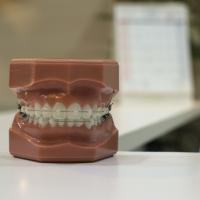Home > Blog > Cosmetic Surgery
The Pros and Cons of Saline vs. Silicone Breast Implants
For individuals who are unhappy with their current silhouette, regardless of the reason, the insertion of breast implants can enhance their quality of life.
Breast augmentation surgery can give individuals more confidence in their aesthetic appearance by:
- Correcting breast asymmetry
- Increasing the size of naturally small breasts
- Restoring the appearance of the breasts after having a mastectomy or experiencing the natural changes that can follow childbearing and breastfeeding
If you are considering plastic surgery to alter the appearance of your breasts, there are two types of breast implants to consider: saline breast implants and silicone breast implants.
Depending on your age and aesthetic goals, one type of implant may be better for you than the other, so it is important to consult with a board-certified plastic surgeon recognized by the American Society of Plastic Surgeons before making a decision.
Understanding your options: saline vs. silicone breast implants
Both saline and silicone breast implants are good options for individuals desiring to change the appearance of their breasts. While silicone implants are the more common option, saline implants are typically less expensive.
While any individual over the age of 18 can obtain saline breast implants as part of a breast augmentation or breast reconstruction procedure, individuals must be 22 years old before receiving silicone implants for breast augmentation.
If you are deciding between these popular types of breast implants, both have unique pros and cons that you will want to carefully consider.
Pros and cons of saline implants
Saline breast implants consist of a silicone shell filled with a sterile saltwater formulation that is safe to have inside the body.
Pros
Saline implants are filled with the sterile saltwater solution after being inserted. This means they can be inserted using a very small incision, which can minimize scarring.
Additionally, because the saline solution is filled manually after insertion, the size of saline breast implants can be adjusted during the procedure. This can be especially appealing for individuals hoping to correct asymmetrical breasts with a breast augmentation procedure.
Because saline is water-based, it is immediately noticeable if saline implants leak or rupture, since the sterile solution quickly drains from the implant. Since ruptured implants will need to be replaced with a breast implant revision, some people prefer the ease with which a leak in a saline implant can be detected.
Cons
Some individuals feel that saline implants look and feel less like natural breast tissue, particularly when it comes to achieving a drastic change in cup size.
Additionally, saline implants may start to appear wrinkled or may become visible through the skin over time.
Pros and cons of silicone implants
Silicone breast implants, which are sometimes called “gummy bear” implants, consist of a silicone shell pre-filled with a silicone gel.
Pros
Many individuals find that silicone implants look and feel more natural than silicone implants. Additionally, their dense texture means that, even in the case of a leak, the implant may hold its shape. As a result, silicone implants generally last longer than saline implants.
In fact, silicone implants can stay inserted indefinitely unless a rupture occurs, although they generally last between 10–25 years.
Cons
Silicone implants come pre-sized by the manufacturer, so individuals electing to use a silicone implant for their breast surgery must choose a specific cup size prior to their procedure. While this is not a problem for most individuals, sometimes asymmetrical implants must be used to account for baseline breast tissue asymmetry.
Additionally, because the full implant is being inserted during the procedure, incision sites are generally larger for silicone implants. However, with proper scar care and intentional incision placement, scars may not be noticeable.
While saline implant ruptures are easy to detect with the naked eye, ruptures in silicone implants often require an ultrasound or an MRI to identify. While having silicone leak into the body is not dangerous, the ruptured implants would need to be removed.
Leaking silicone can also cause breast pain, breast thickening, or changes to breast appearance. As a result, the Food and Drug Administration recommends that individuals with silicone implants be routinely monitored for leaks every 2–3 years.
Quick comparison of saline and silicone implants
Appearance and feel
When it comes to the aesthetic appearance and feel of breast implants:
- Silicone implants generally look and feel more similar to natural breast tissue
- Saline implants may have a tendency to appear wrinkled or misshapen over time
Safety and health considerations
Both saline and silicone implants are safe to insert into the body. However:
- Silicone implants may cause greater scarring, and leaks in silicone implants can cause pain or require surgery if the silicone filling spreads throughout the body.
- Saline implants require smaller incisions, which can minimize scarring. Additionally, leaking saline solution is easily detected.
Which implants are right for you?
Breast implant material is just one factor to consider when selecting the right breast implant for you.
Implants are also customizable in terms of shape, size, placement site, and more.
Shape
Implants can be either round or teardrop shaped. Typically, round implants are more commonly selected because they are less expensive and less likely to move or become displaced over time. Round implants also project off the chest wall more significantly than teardrop-shaped implants.
Size
Breast implants are sized by volume. An implant of 200 cubic centimeters (cc) adds about one cup size. Breast implants can vary from 140 to 850 ccs in size, but most individuals choose to increase their breast size by 200–300 ccs.
Placement site
Breast implants can be placed either above or below the pectoral muscles. Having implants placed above the pectoral muscles, which is called a subglandular placement, is generally easier and results in a quicker recovery. Implant insertion below the pectoral muscles (called a subpectoral placement) may result in a more natural appearance with implants that are less likely to move over time.
Incision site
Implants can be inserted through the nipple, in the armpit, or underneath the breast fold. For individuals with adequate breast tissue prior to surgery, an incision under the breast fold generally hides scarring most effectively. However, a discreet incision within the nipple or the armpit may be a better option for some.
Consult with a board-certified plastic surgeon
The best way to achieve your aesthetic goals the first time is to pursue surgery with a qualified plastic surgeon. The right board-certified plastic surgeon should provide you with before and after galleries of patients who have received breast augmentation or breast implant revision surgeries in the past to ensure that you will be happy with your new silhouette.
When you are ready to update your appearance with breast implants, contact us to request a consultation.
More to Read:
Previous Posts:






